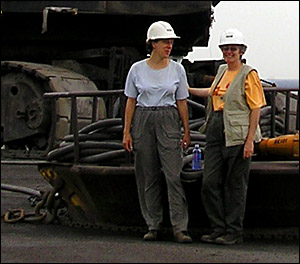 |
 |
| Reporter's Notebook |
||
| by Stephanie Hemphill | ||
Ever since I moved here, the news from the Range has been bad. Layoffs, closures, bankruptcies. Twenty years ago there were 13,000 people working in the mines; now there are 4,000. And then there's the stereotypical image of the Iron Range culture, which involves a lot of drinking, a lot of time at the cabin, hunting, snowmobiling and ice fishing. Not my cup of tea. But as I've spent more time on the Range, I've glimpsed another side to the place. Each of those towns, shabby though they may be, has something special about it. Chisholm seems to breed more liberal politicians than any other town in Minnesota (former Governor Rudy Perpich, Congressman Jim Oberstar, and his predecessor John Blatnik, among others). Virginia has Canelake's Candy Store, and Hibbing has Bob Dylan drive. Even Eveleth, close enough to Virginia to be a suburb, is its own proud self. It boasts the biggest Fourth of July celebration on the Range, and Roosevelt's Bar, supposedly named after the president who helped get rid of Prohibition. We talked with many women who have retired from the mines, and with a few who are still working. They spent a lot of time with us, and willingly answered awkward, even intrusive questions. They are full of stories - funny stories, sad ones, stories whose meaning we could only guess at. They love to talk. They laugh a lot. They have a basic self-respect that buoyed my own feelings about myself as a woman. We met 19-year-old Briana Sterle, who can handle a summer job hosing down dirty floors but itches to escape the Range for a career in photography. And 91-year-old Eleanor Travica, who recounted with delight the time, 60 years ago, when she and her female co-workers finally got revenge on the pest who'd repeatedly squirted them with his grease gun. Jan Wollin invited us to go bowling; Marcy Steele invited us for a barbecue. Every time we came to the Range, we met spunky women who'd lived through tough times, but who keep on going. On our drive back to Duluth, we'd shake our heads in wonder at these people full of grit and sparkle, enjoying their lives in that strange world apart. |
||
| Back to: No Place for a Woman |
